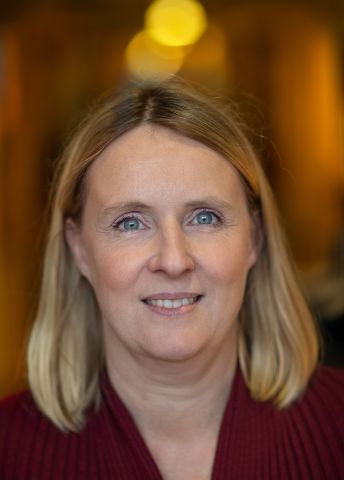
Wallenberg Scholar
Medicine and medical technology
Maria Falkenberg
Professor of Biomedical Laboratory Science
University of Gothenburg
Medicine and medical technology
Maria Falkenberg
Professor of Biomedical Laboratory Science
University of Gothenburg
Rare diseases and age-related problems caused by damaged mitochondrial DNA
Mitochondria are often called the powerhouses of the cells, and they have their own DNA. A child born with damaged mitochondrial DNA may develop serious diseases. But damaged mitochondrial DNA is also linked to normal ageing, and to a number of age-related diseases. Maria Falkenberg is studying how the damage occurs, and whether it can be delayed.
A single cell may contain thousands of copies of mitochondrial DNA, and if only a small proportion are damaged, it will not be noticed but if it reaches a certain threshold, it can cause mitochondrial disease. The proportion of damaged mitochondrial DNA can vary enormously between tissues, organs, and even between cells in the same organ. But at present we do not know why certain cells contain more damaged DNA than others.
Mitochondrial diseases are uncommon, but because there are so many different kinds, they affect one person in 5,000. They often cause serious symptoms in the nervous system and muscles. Over time, mitochondrial DNA becomes increasingly damaged even in healthy people. This may help to explain many common changes in older people, such as muscle weakness and loss of nerve cells. There may also be a link to diseases such as diabetes and Parkinson’s.
Falkenberg is studying how mitochondrial DNA is replicated, and how the process is regulated. The research team is trying to ascertain what determines the number of copies of mitochondrial DNA in a cell, and why damage appears to cluster in certain places, so that symptoms vary widely between individuals, and between tissues in the same individual.
The project is making use of structural biology, protein biochemistry, and molecular biology. Apart from gaining a fundamental understanding of the processes, Falkenberg and her fellow researchers hope to find ways of increasing the levels of undamaged DNA in a cell, thereby alleviating symptoms. The studies may also play a part in development of drugs, both those targeting diseases caused by damaged mitochondrial DNA, and those that are designed for quite different purposes but risk damaging mitochondrial DNA. Trial systems developed at Falkenberg’s laboratory have already helped drug companies to predict unwanted side-effects of this kind.